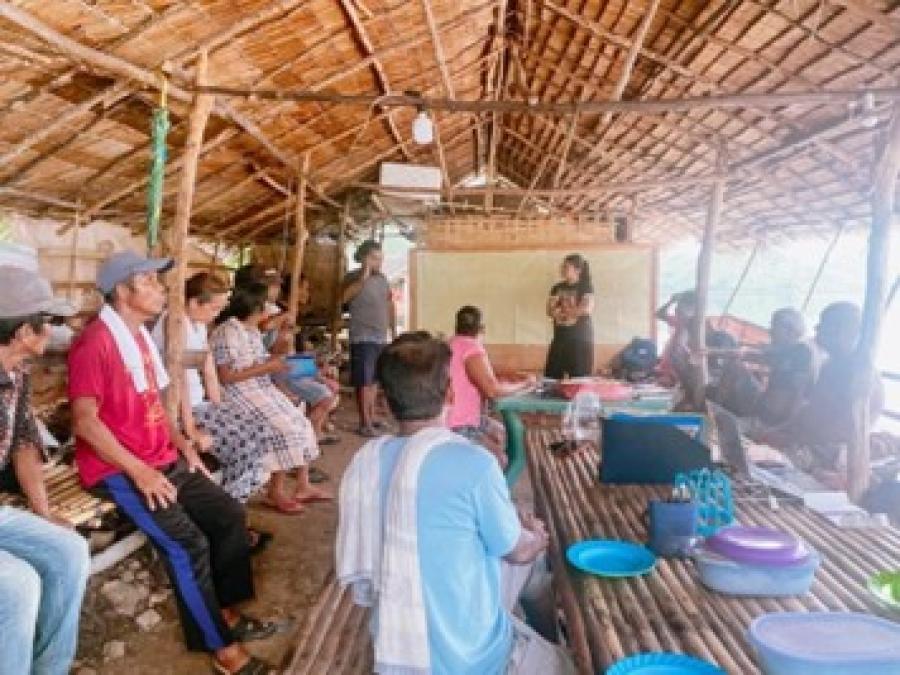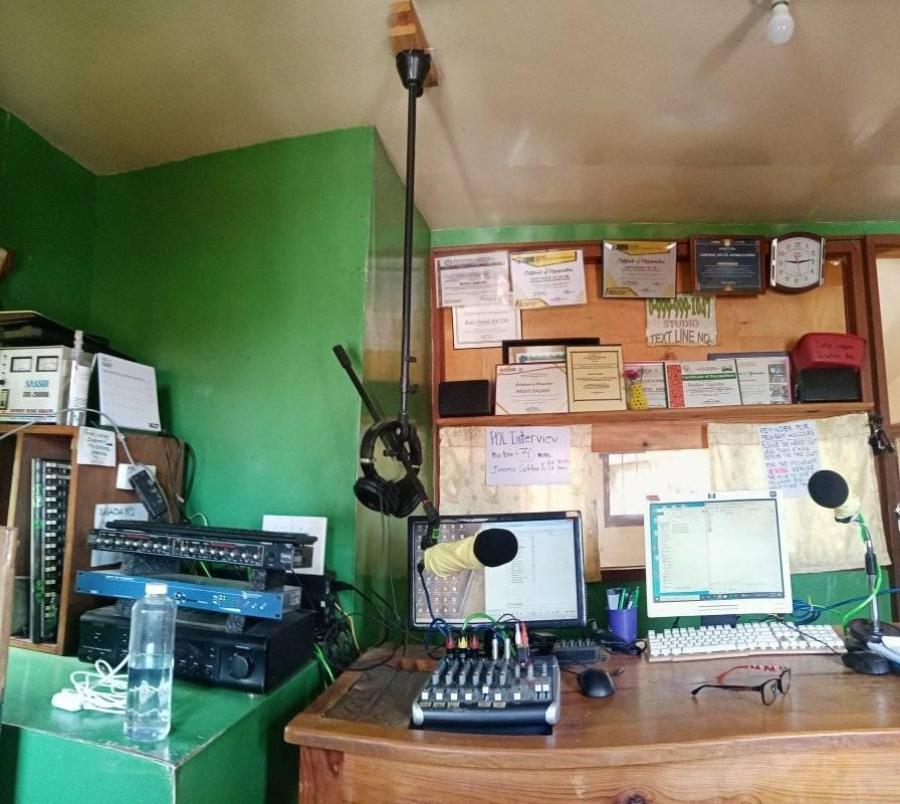An interview with Victoria Tauli-Corpuz
Ellen Lutz interviewed Victoria Tauli-Corpuz, executive director of the Tebtebba Foundation in the Philippines and newly appointed member of the U.N. Permanent Forum on Indigenous Issues, during July’s session of the U.N. Working Group on Indigenous Populations.
What has been the most important accomplishment of the International Decade?
The Decade took the issue of indigenous peoples off the back burner. Now indigenous peoples can bring their issues directly into the international arena. Moreover, the decade pushed governments to do at least a few things to show other governments that they were trying to meet the needs of indigenous peoples.
Can you provide an example?
In my country, the Philippines, the government enacted in 1997 the Indigenous Peoples Rights Act, the first national law in Asia that addresses indigenous rights. In fact it is a clone of the Draft Declaration on Indigenous Peoples. The law was an important first step toward recognizing indigenous rights. On the other hand, the law does not trump a provision in the Philippine Constitution that is called the “Regalian doctrine.” Under that doctrine, the state owns all lands that are not registered as private lands. Since most indigenous peoples never registered land, their lands are now considered “public lands” and are being targeted for development projects.
Would you say that the International Decade contributed to the passage of the Indigenous Peoples Rights Act?
Absolutely. The Decade empowered indigenous people who lobbied the government for the law. The Philippine government regards the law as a feather in their cap, and they are enforcing it, at least to some degree. For example, the law recognizes indigenous customary law in relation to the administration of justice, and NGOs and law schools are now offering training to judges in applying customary law. It also recognizes the rights of indigenous peoples to their ancestral lands and their right to self-determination.
One of the important events of the Decade was the United Nations Human Rights Commission’s appointment of Mexican anthropologist Rodolfo Stavenhagen to be the Special Rapporteur on the situation of human rights and fundamental freedoms of indigenous people. In a book you co-authored with Erlyn Ruth Alcantara, you describe the steps you took to persuade the government of the Philippines to invite him to visit your country, and what you did to ensure that his visit would be meaningful. Can you elaborate on what your wrote there?
The idea for the invitation cropped up during a February 2002 national indigenous peoples workshop attended by indigenous people who reported on cases of human rights violations. The conference then passed a resolution asking the government to invite Mr. Stavenhagen to visit the country, which it did in May 2002. Unfortunately, the initial invitation agenda looked like a tourist itinerary, so Tebtebba took the lead in advising the Special Rapporteur on alternative places to visit. The Philippine government rejected some of these alternatives, and it became necessary to compromise. Later on in the process, the government raised the issue of how the Special Rapporteur’s visit would be paid for, and Tebtebba agreed to take care of the expenses incurred in his community visits and in the regional and national consultations. The Special Rapporteur conducted a 10-day trip beginning on November 30, 2002, and visited Manila, two locations in the Cordillera Region in Northern Luzon, and Butuan City in Mindanao. During his visit he met with senior governmental officials working on environmental protection, human rights and peace issues, the president of the Chamber of Mines, religious leaders, and, most importantly indigenous people. Because his travel was limited, we organized two regional meetings and a national consultation that were attended by representatives of many of the countries’ indigenous peoples.
What was the outcome of the Special Rapporteur’s visit?
In the official report on the Mission to the Philippines, the Special Rapporteur citied meticulously documented reports and case studies on serious human rights violations. He also enumerated development projects on indigenous territorial domains that were carried out without their free, prior, and informed consent. These include large-scale mining, multi-purpose dams, large-scale logging, agri-business, agro-industrial zones, and tourist-oriented heritage parks. The operation of these projects is prepared and secured by the military in the guise of counter-insurgency. Indigenous resistance and protest are countered by military force involving numerous human rights abuses. Stavenhagen’s report expressed incisive insights on the human rights implications of development projects and concluded with comprehensive recommendations.
How did the Philippine government respond to the report?
They sweepingly rejected it as “pure nonsense” and even accused the Special Rapporteur of bad faith and malicious intent. The Philippines Commission on Human Rights representative launched a shameless verbal assault that openly mocked Professor Stavenhagen’s sense of judgment, particularly with respect to his assessment of how a major dam project would impact upstream indigenous villages. However, in the debriefing session which he held with government representatives immediately after his mission, the representatives who were there—particularly the Chairperson of the National Commission on Indigenous Peoples and the Presidential Adviser on Indigenous Peoples—said that they concurred with his findings and recommendations.
In your book, Engaging the UN Special Rapporteur on Indigenous People: Opportunities and Challenges, you write that the Philippine Government’s “barrage exploded on itself.” Can you explain what you mean?
The government response to the Special Rapporteur’s report shows a stance that precludes any possible discourse on substantive issues or urgent situations. It also clearly illustrates how the Philippine government makes decisions on economic development policies without adequate understanding of the actual social and environmental costs. It is indeed lamentable that irreparable and long-term destruction is incomprehensible to a government so steeped in its discrimination and oppression of indigenous peoples and its subservience to the interests of the landed and corporate elites in the country. From my perspective, the government bared its hypocrisy and mocked the democratic ideals it claims to hold. At the very least, it could have shown some effort to review the reports presented to the Special Rapporteur during his visit and soberly examine their veracity instead of demolishing the credibility of the people and organizations presenting them.
Was there any positive government response to the visit?
The Special Rapporteur’s visit led to the creation of focal points on indigenous issues in various government departments such as National Defense, but overall, like the government’s responses to most of the objectives of the International Decade, the response has been token.
Do you think the Philippine government’s response is typical of other countries?
I do. Left on their own, most governments wouldn’t care about indigenous issues. It is only because indigenous peoples pushed that there has been any action at the state level, and in most countries, the response has been ceremonial, not actual.
Governments have contributed to the Voluntary Fund for the Decade of the World’s Indigenous People, haven’t they?
Some have, though it is worth pointing out that the United States has not given one cent. But the annual amounts are minimal. [Editor’s note: In the 12-month period ending on March 16, 2004, 16 states, two private parties, and the United Nations staff gave a total of $345,243 to the Fund. The Fund received 159 admissible applications for project grants representing an amount of over $2.8 million. Thirty-five projects were funded.] What we need is a permanent worldwide indigenous peoples fund like UNIFEM [U.N. Women’s Fund] or UNICEF [U.N. Children’s Fund].
You have just been appointed to the Permanent Forum on Indigenous Issues. What are your hopes for that body?
I would like to see it evolve into a permanent worldwide structure for the promotion and respect of indigenous peoples’ individual and collective rights. I am aware, however, that there is resistance from several countries to the establishment of this body. These are the same ones that have been consistent in violating the rights of the indigenous peoples and those that even deny the very existence of indigenous peoples in their countries. I think the key roles for the Permanent Forum are first, to ensure that member states do their share to promote and respect indigenous peoples’ rights and second, to coordinate the various U.N. agencies, bodies, programs, and funds to ensure that their programs and policies complement and reinforce each other in terms of promoting the right of indigenous peoples to determine and implement their own economic, social, and cultural development. The Forum can do this because it provides advice to ECOSOC [U.N. Economic and Social Council] and once ECOSOC pushes, the United Nations and governments start to do things. But those of us on the Permanent Forum need to better understand the inner workings of the United Nations system.
Do you have any immediate goals for the Permanent Forum?
In my view, the central thrust of the Permanent Forum next year should be to push for the implementation of the past Permanent Forum recommendations, most of which have not yet been implemented.



